Content
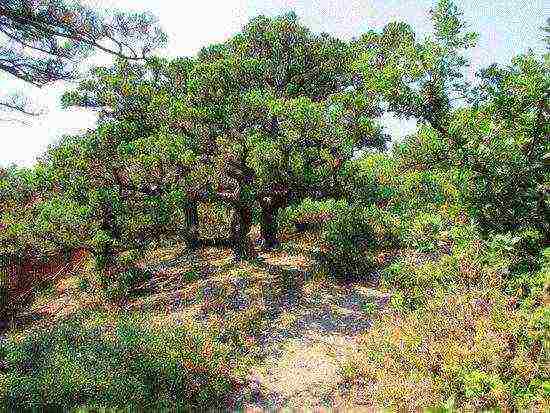
The flora of the Krasnodar Territory is really rich and diverse. Especially in spring, looking at the flourishing plains, dense forests, vineyards, it is easy to imagine what Paradise would look like, what it could be. An amazing combination of modern cities with developed economies and wild places of nature, which, unfortunately, are becoming less and less numerous. Human activities cannot but reflect on the life of the region. Many plants are already marked as an endangered species, forests are regularly cut down, cities are growing, villages are developing, the population of the Krasnodar Territory is increasing as a whole. Therefore, the defenders of nature do not get tired of repeating: if a person considers himself “the king of nature” and its conqueror, he must take care of it. After all, everything is interconnected and when one of the components of the chain of the cycle of events is violated, the rest also suffer.
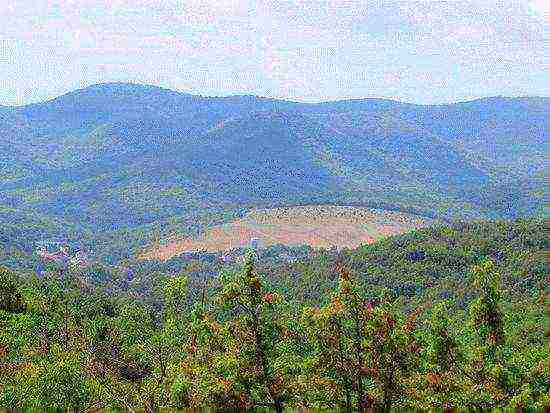
Steppes, forests
In the region there are vast steppe zones, where you can find bushes typical of plains and hills, and individual plants. This is vetch, and timothy, and steppe feather grass. Reeds are found along the shores of lakes and swamps. On the plowed areas, agricultural crops are annually grown: these are wheat, corn and barley, as well as sugar beets and castor oil plants. There are vegetable gardens where vegetables grow on fertile land. The pharmaceutical industry is also developed, for the needs of which medicinal herbs are grown separately.
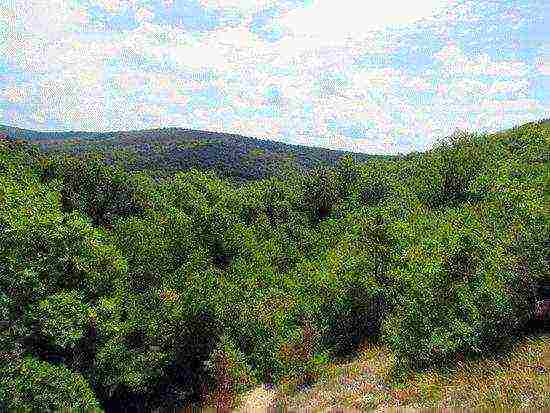
In the forest zone, you can see broad-leaved oaks, mountain firs and beautiful spruces, and if you climb high, go out to alpine meadows. Only mountain goats and rams roam there, for which the high-altitude zones are their home.
It is curious that in the area of the Taman Peninsula you can also see steppe vegetation, for example, the same sage or polynya. The sandy shores are full of licorice with bluehead, alfalfa with timothy, sometimes camel thorn. In some places, thickets of trees and shrubs add variety to the steppe picture. The vast plains have been invaded by cultivated vegetation, and they are increasingly being adapted for fields.
In the estuaries, the level of humidity is quite high, it is not even afraid of droughts, when the water level drops, but then replenishes with the arrival of rains. Aquatic plants do not experience a strong lack of water. Here you can find lilies, nymphs with water walnuts, duckweed with salvinia, as well as other types of algae. The banks are densely covered with reeds, kuga, cattails are found, and marsh wormwood can be found. And next to Primorsko-Akhtarsk there is a unique place where you can find real lotuses, a beautiful and useful plant.
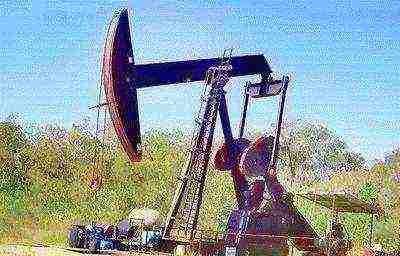
The lands of the Krasnodar Territory are full of natural resources, the extraction and processing of which makes it possible for the Kuban to develop and supplies the industry with important raw materials.
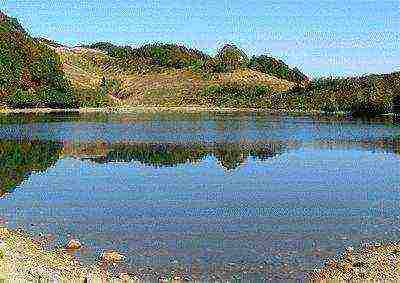
The number of lakes in the Krasnodar Territory, according to various sources, exceeds three hundred. They are scattered in various places: in the valleys along which the steppe rivers flow; along the coastlines of the seas - Black and Azov; in the lower reaches of the main river of the region - the Kuban; among the majestic and high Caucasian mountains in almost a third of our territory.
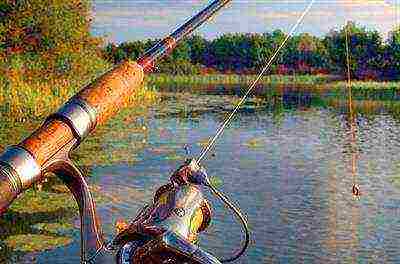
Those who like to sit with a fishing rod or a spinning rod in their hands at an early dawn by the reservoir, and then cook a fragrant ear for lunch or fry a fish in a hot frying pan, and even with an onion, with spices and, by the way, not only from among the locals, but also from numerous guests Krasnodar Territory, opportunities, as they say, do not embrace!
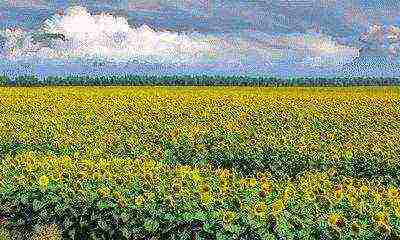
Description of the southern region of Russia - Krasnodar Territory, located in the southwest of the Russian Federation and part of the Southern Federal District.
Related materials:
Have you noticed an error or information that is out of date? Please,
inform
us about it
The flora of the Krasnodar Territory
According to scientists, more than 3000 plant species are found in the Krasnodar Territory. This is due to the geographical location, the variety of landforms and climatic conditions. The main types of vegetation in the region are flat and mountainous. Since the flat part of the region is located mainly in the steppes, it is characterized by a herbaceous type of plants.
Plain vegetation
A vast part of the territory in the northern part of the region is occupied by steppe vegetation. It stretches from the borders of the Rostov region to the banks of the Kuban River. Now in places where steppe feather grass, wheatgrass, vetch, timothy grass used to grow, bread grows on plowed lands. Herbs with medicinal properties are specially grown in the fields as raw materials for the medicinal industry. On the banks of the rivers in the past there were hazel trees, wild almonds, and thorns formed impenetrable thickets. Permanent felling, forest fires have destroyed a large amount of woody vegetation. Now on the watersheds of the plains you can find oak, elderberry, thorn, wild rose, blackberry, etc. Along the river valleys - willow, willow, black and white poplar, alder. Steppe vegetation with the presence of sage and wormwood is also found within the Taman Peninsula. On the sandy shores, licorice, bluehead, alfalfa, timothy grow, and sometimes even camel thorns can be found. In some places there are rare thickets of trees and bushes. The vast plains are dominated by cultivated vegetation. The Azov region is a floodplain and meadow-bog complexes. Due to sufficient moisture, the estuaries of the Azov Sea are rich in aquatic vegetation. For example, these are lily, nymphaean, water walnut, duckweed, salvinia and varieties of algae. The banks of estuaries are overgrown with reeds, cattails and kuga, which is also called marsh wormwood. Not far from the town of Primorsko-Akhtarsk, near the Sadki hunting farm, there is one of the unique places where lotuses grow. It is a medicinal plant, and in Egypt and India its fruits are eaten. A significant part of the marshes and small estuaries are now drained and used for growing rice. Areas of forest plants in the Azov region are found not far from the village of Maryanskaya, in the Krasny Les protected hunting area. Maple, apple, pear, poplar, willow, viburnum, etc. grow here. Sometimes you can find oaks in 5 girths. Along the channel of the Kuban River and its left tributaries, there are floodplain meadows with trees and bushes. Remains of forests in the Kuban floodplain are also preserved in forest-park zones. Among them are Pavlovsk and Kirghiz floodplains, the Krasny Kut forest park, located in the residential districts of Krasnodar.
Within the city limits of Krasnodar, the dendarium of the Kuban Agrarian University is of great interest. It was founded in 1959 and covers an area of 73 hectares. It contains 1200 species of plants, not counting herbaceous ones. About 140 species were brought here from different parts of Russia and other countries of the world.
The vegetation of the Trans-Kuban plain before human intervention was broad-leaved forests of oak, beech and shrubs. At present, the valley is a cut-out gentle slope. The main part of the Trans-Kuban plain is agricultural landscapes. Alder, willow, hawthorn, viburnum, buckthorn, blackthorn, elderberry, wild rose grow along the valleys of the rivers Kuban, Laba, Belaya and their tributaries, and in some places there are thickets of sea buckthorn.On the stretch from the Krasnodar reservoir to the city of Krymsk, south of the Kuban River, there is a strip of Zakubanskaya floodplains, which is almost entirely occupied by rice paddies and fields for growing other crops.
Mountain vegetation
The steppe and forest-steppe zones of the plain part of the region are replaced in the south by broad-leaved and coniferous forests. Up to 700 meters above sea level, the main type of vegetation is oak. It is the most common tree in the mountains. The oak forms whole continuous forests, covering the foothills and spurs. Many animals eat oak fruits; bark is a valuable medicinal raw material. In addition to oak, there are a lot of ash, elm, hornbeam in the forests. Of the fruit trees, the most common are apple, dogwood, wild cherry, walnut, viburnum, chestnut, and from berries - gooseberries, raspberries, currants. Various herbaceous plants are found in the deciduous forests of the Krasnodar Territory; tall ferns, horsetails, moss. An adult can freely hide in the thickets of burdocks. Other plants pose a danger to humans; when touched with the skin, they leave painful burns (Caucasian ash, cow parsnip).
At an altitude of 1200 meters, oak forests are complemented by beech and fir trees, as well as aspen, alder and maple. Beautiful beeches with a powerful columnar trunk with light gray bark can live up to 300-400 years. The wood of these trees is used in joinery, turning and furniture production. Tar, acetone is also obtained from it. Nuts contain up to 35% oil and are edible in small amounts.
There are coniferous forests up to an altitude of 2000 meters at sea level. These are mainly Caucasian fir and oriental spruce, as well as Nordman fir - an evergreen tree with a straight trunk, the height of which reaches 60 meters. She provides construction and ornamental timber and is used to make paper. Fir needles are used to prepare oils that are widely used in perfumery and medicine. Koch pine is found in open sunny areas. In the basin of the Bolshaya and Malaya Laba rivers, forests of eastern spruce have survived, which lives up to 500-600 years, the trunk diameter reaches 20 meters, and the height is 30 meters. These forests are essential. Spruce wood is used to make musical instruments.
A strip of forest at an altitude of 2000 meters above sea level gives way to subalpine meadows with thick grass cover. Woody vegetation is also found here. These are mainly crooked birch trees, undersized juniper. Most of the subalpine belt is relict. At an altitude of 2300-2500 m above sea level, such meadows are replaced by alpine meadows. Due to the severity of the climate, the herbaceous vegetation is lower and less diverse. The maximum height of the herbs reaches 15 cm. Among them there are some types of bells, skullcap, gentian, and mytnik Panyutin. Many plants are listed in the Red Book. But, unfortunately, the varied agricultural activities, as well as the development of tourism, have slightly changed the look of the alpine meadows. Weeds appear (hellebore Lobel, alpine sorrel, thistle).
Gradually, with increasing height, the vegetation becomes less and less, only mosses and lichens. At 3000 m, there are gray cliffs covered with snow, and also almost devoid of any plants. Within the Krasnodar Territory, the territory of the Black Sea coast occupies a section from Anapa to the border with Georgia. These places are divided into northern (from Anapa to Tuapse) and southern (from Tuapse to Adler) parts. The vegetation in the Anapa region on the plains is close to the steppe, that is, predominantly herbaceous. Sometimes in sandy areas flora is practically absent. Only occasionally are there tamarisk bushes, from herbs - fescue, sage, astragalus, sainfoin. In the area of Novorossiysk and Gelendzhik, vegetation alternates with bare areas, which used to be quite good forests. Currently, the entire territory is plowed up or occupied by settlements.On the southern clone of the Markokht ridge on the territory of the Novorossiysk agricultural enterprise, there is the Sheskharis natural complex. Here grow fluffy oak, hornbeam, as well as century-old junipers up to 5 meters high.
To the south of Gelendzhik, the forests are better preserved due to the elevation of the relief and the increase in moisture. Further south, such plants as ivy, clematis, smilax, etc. begin to appear. Beech grows at an altitude of 500-600 meters above sea level, and a noble chestnut is found near Tuapse.
The southern part of the Black Sea coast is divided by climatic and natural conditions into the Sochi subtropics and the Prikolkhidsky mountain region. The Sochi subtropics occupy the coast from Tuapse to the Psou River. Thanks to the abundance of the sun, palm trees and yuccas, cork oak, bamboo, magnolia, eucalyptus, mimosa, and Japanese camellia grow here. Scumpia, ivy, cherry laurel, and Pontic rhododendron grow in the forests of this region. Tea and tangerines are grown in the Adler region. In this area, the Yuzhnye Kultury park was founded, where ornamental trees, shrubs are grown, and a family fund is created for landscaping parks and squares. Here is the flora of the entire subtropical belt of the earth. In the near-Kolkhidsky mountainous region, the forest zone is located much lower, it almost adjoins the coastal edge. The territory is covered with woody species. Boxwood groves are widespread up to an altitude of 400-500 m. Figs grow in open rocky areas along river valleys up to a height of 800 meters. In the undergrowth up to an altitude of 2000 m, there is a Pontic rhododendron, a Colchis holly, cherry laurel grows to an altitude of 2400 m Alpine meadows begin at an altitude of 2000 m, and above 2500-2800 bare rocks begin, as well as numerous snowfields and glaciers.
Photos of vegetation of Krasnodar Territory
Back to section
Legendary Thirty, route
Across the mountains to the sea with a light backpack. Route 30 passes through the famous Fisht - this is one of the most grandiose and significant natural monuments in Russia, the highest mountains closest to Moscow. Tourists pass lightly all the landscape and climatic zones of the country from the foothills to the subtropics, all overnight stays in stationary shelters.
To the edge of mountains and waterfalls
One-week tour in Adygea, one-day hiking and excursions combined with comfort (trekking) in the mountain resort of Khadzhokh. Tourists live at the camp site and visit natural monuments: Rufabgo Waterfalls, Aminovskoe gorge, Lago-Naki plateau, Meshoko gorge, Azish cave, White River Canyon, Dolmen, Guam gorge. A program for everyone
To the edge of the Crimean mountains
One week tour with hotel accommodation at the verybeautiful mountain Crimea - South Demerdzhi. Trekking, auto-walking excursions with a survey of the most beautiful places of the mountainous Crimea, the Valley of Ghosts, stone chaos, waterfalls, stone mushrooms with a visit to the MAN cave and the equipped Red Cave.
Vegetable world the edge is represented by broad-leaved (beech, oak) and dark-coniferous mountain (fir, spruce) forests, subalpine and alpine meadows. More than 3000 plant species are found here. Due to the relief and climatic conditions, the latitudinal and vertical zoning of vegetation is expressed. The main types of vegetation in the region are flat and mountainous.
A vast part of the territory in the northern part of the region is occupied by steppe vegetation. It stretches from the borders of the Rostov region to the banks of the Kuban River. Now, in places where steppe feather grass, wheatgrass, vetch, timothy grass used to grow, wheat, corn, sugar beets, sunflowers, barley, sorghum, castor oil plants, essential oil and vegetable melons are grown on the plowed lands. Herbs with medicinal properties are specially grown in the fields as raw materials for the medicinal industry. On the banks of the rivers in the past there were hazel, wild almonds, and thorns formed impenetrable thickets. Permanent felling, forest fires have destroyed a large amount of woody vegetation. Now, on the watersheds of the plains, you can find oak, elderberry, blackthorn, rosehip, blackberry, etc.etc .; along the river valleys - willow, willow, black and white poplar, alder.
On the right bank of the Kuban River, approximately 50-60 km west of Krasnodar (Krasnoarmeisky District), near the village of Ivanovskaya, there is an array of the so-called Red Forest. Its territory is now 4750 hectares, and in the 70s of the 20th century, the forest occupied 5200 hectares. But even then it was only a remnant of the floodplain and mountain forests that bordered the banks of the Kuban to the very bottom and occupied an area of 15 thousand hectares. The name Red Forest was given for the red coloration of autumn foliage, as well as for its special beauty. In the Red Forest grow oak, hornbeam, poplar, ash, maple, wild apple and pear; in the undergrowth you can find thickets of dogwood, wild rose, hawthorn, viburnum, and along the river - grassy thickets of bright yellow during the flowering period of loosestrife. It is impossible to pass by the very thorny and tall trees of evergreen wild acacia here. Red Forest is part of the Caucasian Biosphere Reserve. This is a specially protected natural area, a state reserve. The red forest is fenced around the perimeter and it is difficult to get into it. Inside the forest there is a village of the same name. Eminent guests have visited the Red Forest: Raul Castro, Yeltsin BN, Viktor Chernomyrdin, and every year rich Europeans, lovers of the "royal hunt" have come and come. Here you can find deer, roe deer, hare, fox, marten, wild boar and other animals. Commercial hunting is prohibited here. Only the so-called preventive hunting of sick and old animals is allowed. Moreover, it is forbidden to pick mushrooms and berries, harvest firewood, graze livestock, and conduct economic activities. The residence of the governor of the Krasnodar Territory is also located here. In the depths of the Red Forest there is a lake with the funny name Trusovo knee: the lake is famous for its powerful whirlpools, and in the old days people were afraid to swim in it.
Steppe vegetation with the presence of sage and wormwood is also found within the Taman Peninsula. On the sandy shores, licorice, bluehead, alfalfa, timothy grow, and sometimes even camel thorns can be found. In some places there are rare thickets of trees and bushes. The vast plains are dominated by cultivated vegetation. The Azov region is a floodplain and meadow-bog complexes. Due to sufficient moisture, the estuaries of the Azov Sea are rich in aquatic vegetation. For example, these are lily, nymphaean, water walnut, duckweed, salvinia and varieties of algae. The banks of estuaries are overgrown with reeds, cattails and kuga, which is also called marsh wormwood. Not far from the town of Primorsko-Akhtarsk, near the Sadki hunting farm, there is one of the unique places where lotuses grow. It is a medicinal plant, and in Egypt and India its fruits are eaten. A significant part of the marshes and small estuaries are now drained and used for growing rice. Areas of forest plants in the Azov region are found not far from the village of Maryanskaya, in the Krasny Les protected hunting area. Maple, apple, pear, poplar, willow, viburnum, etc. grow here. Sometimes you can find oaks in 5 girths. Along the channel of the Kuban River and its left tributaries, there are floodplain meadows with trees and shrubs. Remains of forests in the Kuban floodplain are also preserved in forest park zones. Among them are the Pavlovsk and Kirghiz floodplains, the Krasny Kut forest park, located in the residential districts of Krasnodar.
The vegetation of the Trans-Kuban plain before human intervention was broad-leaved forests of oak, beech and shrubs. At present, the valley consists of cut-out gentle slopes. The main part of the Trans-Kuban plain is agricultural landscapes. Alder, willow, hawthorn, viburnum, buckthorn, blackthorn, elderberry, wild rose grow along the valleys of the rivers Kuban, Laba, Belaya and their tributaries, and in some places there are thickets of sea buckthorn.On the stretch from the Krasnodar reservoir to the city of Krymsk, south of the Kuban River, there is a strip of Zakubanskaya floodplains, which is almost entirely occupied by rice paddies and fields for growing other crops.
Forest occupies an important place in the Kuban, as it is of great nature conservation value and is the main source of valuable timber species in Russia. The total forest area of the Krasnodar Territory is over 2.1 million hectares (22% of the territory of the region). Oak and beech massifs of industrial importance occupy 49 and 19% of the area of all forests in the region, respectively. Most of the forests are located in the mountainous part of the Krasnodar Territory.
In the lowlands, forests of various types of oak are most common. A large area is occupied by wild fruits, especially pear and apple trees. In the mountains, forests form a mountain-forest belt. Four sub-belts are distinguished within it. Broad-leaved oak forests with stands of pedunculate oak, Gartvis oak, rock oak, Caucasian hornbeam, high ash, red and field maples, Caucasian linden, chestnut stretch up to an altitude of 500-600 m above sea level. There are arrays of wild-growing pears, apple trees, cherry plums; in clearings - aspen. On the border of the forest, along the mountain rivers, walnut trees often grow. Undergrowth is formed by dogwood, klekachka, hold-tree. At altitudes from 600-700 to 1200-1300 m there are beech forests with a predominance of eastern beech, as well as hornbeam, rock oak, sycamore. In the upper part of the sub-belt, Caucasian fir is mixed with the beech. At altitudes from 1200 to 2000 meters, dark coniferous forests grow, consisting of Caucasian fir (Nordmann) and eastern spruce. Koch pine is found in open sunny areas. Above 2000 meters there is a subalpine crooked forest with a thick grass cover. Here hooked pine and Caucasian fir alternate with areas of crooked birch, beech, mountain ash, alder, juniper and Caucasian rhododendron. Relic plants grow here. At an altitude of 2300-2500 m above sea level, there is a belt of alpine meadows. Due to the severity of the climate, the herbaceous vegetation is lower and less diverse. The maximum height of the herbs reaches 15 cm. Among them there are some types of bells, skullcap, gentian, and mytnik Panyutin. Many plants are listed in the Red Book.
In the flora of the coast, juniper (often with an admixture of dull-leaved pistachio) woodlands are of particular value. They are widespread from Anapa to the mouth of the Mezyb River (beyond Gelendzhik) and serve as a haven for ancient Mediterranean flora. The main species are dull-leaved pistachio, tall juniper, stinky juniper, Etruscan honeysuckle.
The Taman Peninsula is located in the flooded area. Therefore, there are practically no forests, but this does not mean that the flora in this area is poor. Estuaries and floodplains are densely overgrown with reeds and other aquatic plants. In some lakes, Indian lotus is bred.
Dog needs help
See also:
Vegetation of the Krasnodar Territory
According to scientists, more than 3000 plant species are found in the Krasnodar Territory. This is due to the geographical location, the variety of landforms and climatic conditions. The main types of vegetation in the region are flat and mountainous. Since the flat part of the region is located mainly in the steppes, it is characterized by a herbaceous type of plants.
Plain vegetation.
A vast part of the territory in the northern part of the region is occupied by steppe vegetation. It stretches from the borders of the Rostov region to the banks of the Kuban River. Now, in places where steppe feather grass, wheatgrass, vetch, timothy grass used to grow, bread grows on plowed lands. Herbs with medicinal properties are specially grown in the fields as raw materials for the medicinal industry. In the past, along the banks of the rivers, there were hazel trees, wild almonds, and thorny thorns formed impenetrable thickets.Permanent felling, forest fires have destroyed a large amount of woody vegetation. Now on the watersheds of the plains you can find oak, elderberry, thorn, wild rose, blackberry, etc. Along the river valleys - willow, willow, black and white poplar, alder. Steppe vegetation with the presence of sage and wormwood is also found within the Taman Peninsula. On the sandy shores, licorice, bluehead, alfalfa, timothy grow, and sometimes even camel thorns can be found. In some places there are rare thickets of trees and bushes. The vast plains are dominated by cultivated vegetation.
The Azov region is a floodplain and meadow-bog complexes. Due to sufficient moisture, the estuaries of the Azov Sea are rich in aquatic vegetation. For example, these are lily, nymphaean, water walnut, duckweed, salvinia and varieties of algae. The banks of estuaries are overgrown with reeds, cattails and kuga, which is also called marsh wormwood. Not far from the town of Primorsko-Akhtarsk, near the Sadki hunting farm, there is one of the unique places where lotuses grow. It is a medicinal plant, and in Egypt and India its fruits are eaten. A significant part of the marshes and small estuaries are now drained and used for growing rice. Areas of forest plants in the Azov region are found not far from the village of Maryanskaya, in the Krasny Les protected hunting area. Maple, apple, pear, poplar, willow, viburnum, etc. grow here. Sometimes you can find oaks in 5 girths. Along the channel of the Kuban River and its left tributaries, there are floodplain meadows with trees and bushes. Remains of forests in the Kuban floodplain are also preserved in forest park zones. Among them are the Pavlovsk and Kirghiz floodplains, the Krasny Kut forest park, located in the residential districts of Krasnodar.
Within the city limits of Krasnodar, the arboretum of the Kuban Agrarian University is of great interest. It was founded in 1959 and covers an area of 73 hectares. It contains 1200 species of plants, not counting herbaceous ones. About 140 species were brought here from different parts of Russia and other countries of the world.
The vegetation of the Trans-Kuban plain before human intervention was broad-leaved forests of oak, beech and shrubs. At present, the valley consists of cut-out gentle slopes. The main part of the Trans-Kuban plain is agricultural landscapes. Alder, willow, hawthorn, viburnum, buckthorn, blackthorn, elderberry, wild rose grow along the valleys of the Kuban, Laba, Belaya rivers and their tributaries, and in some places there are thickets of sea buckthorn. On the stretch from the Krasnodar reservoir to the city of Krymsk, south of the Kuban River, there is a strip of Zakubanskaya floodplains, which is almost entirely occupied by rice paddies and fields for growing other crops.
Mountain vegetation.
The steppe and forest-steppe zones of the plain part of the region are replaced in the south by broad-leaved and coniferous forests. Up to 700 meters above sea level, the main type of vegetation is oak. It is the most common tree in the mountains. The oak forms whole continuous forests, covering the foothills and spurs. Oak fruits are eaten by many animals, the bark is a valuable medicinal raw material. In addition to oak, there are a lot of ash, elm, hornbeam in the forests. From fruit trees, apple trees, dogwood, wild cherries, walnuts, viburnum, chestnuts are widespread, from berries - gooseberries, raspberries, currants. Various herbaceous plants are found in the deciduous forests of the Krasnodar Territory; tall ferns, horsetails, moss. An adult can freely hide in the thickets of burdocks. Other plants pose a danger to humans; when touched with the skin, they leave painful burns (Caucasian ash, cow parsnip).
At an altitude of 1200 meters, oak forests are complemented by beech and fir trees, as well as aspen, alder and maple. Beautiful beeches with a powerful columnar trunk with light gray bark can live up to 300-400 years.The wood of these trees is used in joinery, turning and furniture production. Tar, acetone is also obtained from it. Nuts contain up to 35% oil and are edible in small amounts.
There are coniferous forests up to an altitude of 2000 meters at sea level. These are mainly Caucasian fir and oriental spruce, as well as Nordmann's fir - an evergreen tree with a straight trunk, the height of which reaches 60 meters. She provides construction and ornamental timber and is used to make paper. Fir needles are used to prepare oils that are widely used in perfumery and medicine. Koch pine is found in open sunny areas. In the basin of the Bolshaya and Malaya Laba rivers, forests of eastern spruce have been preserved, which lives up to 500-600 years, the trunk diameter reaches 20 meters, and the height is 30 meters. These forests are essential. Spruce wood is used to make musical instruments.
A strip of forest at an altitude of 2000 meters above sea level gives way to subalpine meadows with thick grass cover. Woody vegetation is also found here. These are mainly crooked birches, undersized junipers. Most of the subalpine belt is relict. At an altitude of 2300-2500 m above sea level, such meadows are replaced by alpine meadows. Due to the severity of the climate, the herbaceous vegetation is lower and less diverse. The maximum height of the herbs reaches 15 cm. Among them there are some types of bells, skullcap, gentian, Panyutin's mytnik. Many plants are listed in the Red Book. But, unfortunately, the varied agricultural activities, as well as the development of tourism, slightly changed the appearance of the alpine meadows. Weeds appear (hellebore Lobel, alpine sorrel, thistle).
Gradually, with increasing height, the vegetation becomes less and less, only mosses and lichens. At 3000 m, there are gray cliffs covered with snow, and also almost devoid of any plants. Within the Krasnodar Territory, the territory of the Black Sea coast occupies a section from Anapa to the border with Georgia. These places are divided into northern (from Anapa to Tuapse) and southern (from Tuapse to Adler) parts. The vegetation in the Anapa region on the plains is close to the steppe, that is, predominantly herbaceous. Sometimes in sandy areas flora is practically absent. Only occasionally are there tamarisk bushes, from herbs - fescue, sage, astragalus, sainfoin. In the area of Novorossiysk and Gelendzhik, vegetation alternates with bare areas, which used to be quite good forests. Currently, the entire territory is plowed up or occupied by settlements. On the southern clone of the Markokht ridge on the territory of the Novorossiysk agricultural enterprise there is the Sheskharis natural complex. Downy oak, hornbeam and century-old junipers up to 5 meters high grow here.
To the south of Gelendzhik, the forests are better preserved due to the elevation of the relief and the increase in moisture. Further south, such plants as ivy, clematis, smilax, etc. begin to appear. Beech grows at an altitude of 500-600 meters above sea level, and a noble chestnut is found near Tuapse.
The southern part of the Black Sea coast is divided by climatic and natural conditions into the Sochi subtropics and the Prikolkhidsky mountain region. The Sochi subtropics occupy the coast from Tuapse to the Psou River. Thanks to the abundance of the sun, palm trees and yuccas, cork oak, bamboo, magnolia, eucalyptus, mimosa, and Japanese camellia grow here. Scumpia, ivy, cherry laurel, and Pontic rhododendron grow in the forests of this region. Tea and tangerines are grown in the Adler region. In this area, the Yuzhnye Kultury park was founded, where ornamental trees and shrubs are grown, and a family fund is created for landscaping parks and squares. Here is the flora of the entire subtropical belt of the earth. In the near-Kolkhidsky mountainous region, the forest zone is located much lower, it almost adjoins the coastal edge. The territory is covered with woody species. Boxwood groves are widespread up to an altitude of 400-500 m.Figs grow in open rocky areas along river valleys up to a height of 800 meters. In the undergrowth up to an altitude of 2000 m, there is a Pontic rhododendron, a Colchis holly, cherry laurel grows to an altitude of 2400 m Alpine meadows begin at an altitude of 2000 m, and above 2500-2800 bare rocks begin, as well as numerous snowfields and glaciers.


